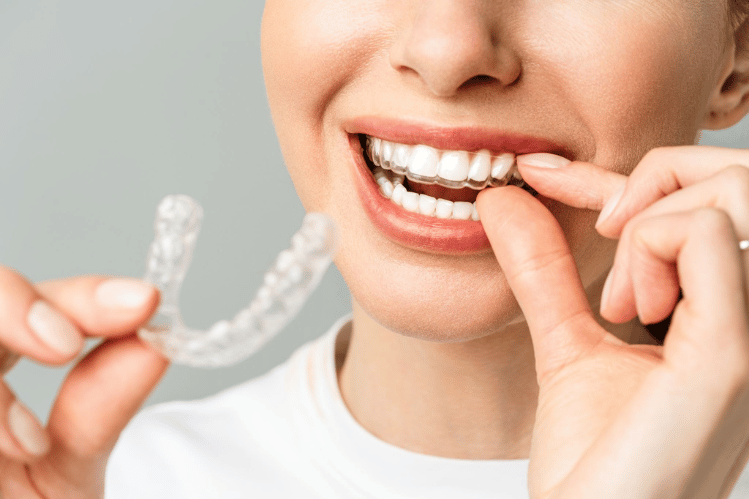Legacy Orthodontics for Beginners
Legacy Orthodontics for Beginners
Blog Article
Everything about Legacy Orthodontics
Table of ContentsThe Ultimate Guide To Legacy OrthodonticsThe Best Guide To Legacy Orthodontics9 Simple Techniques For Legacy OrthodonticsGetting My Legacy Orthodontics To WorkThe Best Strategy To Use For Legacy Orthodontics
In addition, we supply adjustable treatment timetables, flexible repayment alternatives and an enjoyable, satisfying experience.An orthodontist is a dental professional educated to diagnose, prevent, and treat teeth and jaw abnormalities. Orthodontists work with individuals of all ages, from children to grownups.
Malocclusion, or misaligned teeth, can lead to oral issues, consisting of dental cavity, gum condition, and tough or agonizing chewing. Not everyone is born with straight teeth. If you have a negative bite or large rooms between your teeth, you might desire to seek advice from a dental practitioner specializing in orthodontic treatment.
Legacy Orthodontics Can Be Fun For Everyone
( Image Credit: DigitalVision/Getty Images) Orthodontists utilize dealt with and detachable dental gadgets, like braces, retainers, and bands, to transform the setting of teeth in your mouth. Orthodontic treatment is for oral irregularities, including: Uneven teethBite issues, like an overbite or an underbiteCrowded teeth or teeth that are also far apartJaw misalignmentThe objective of orthodontic treatment is to improve your bite.
A healthy and balanced bite ensures you can eat, chew, and speak appropriately. While you may consider orthodontists as mostly for kids or teenagers that need dental braces, they can fix oral issues at any kind of age. Orthodontists attend university, oral institution, and orthodontic school. After graduation, they spend 2 or 3 years in an orthodontic residency program.
All orthodontists are dental professionals, however not all dental practitioners are orthodontists. Orthodontic residency programs use extensive, concentrated guideline for oral professionals. They concentrate on two areas: Exactly how to appropriately and securely relocate teeth Just how to effectively guide development in the teeth, jaw, and faceOnce an orthodontist has completed training, they have the option to come to be board licensed.
Fascination About Legacy Orthodontics
Imbalance, or malocclusion, is the most common factor people see an orthodontist. It is hereditary and is the outcome of size distinctions between the upper and reduced jaw or between the jaw and teeth. Malocclusion results in tooth overcrowding, an irregular jaw, or uneven bite patterns. Malocclusion is generally treated with: Your orthodontist connects metal, ceramic, or plastic square bonds to your teeth.
If you have just minor malocclusion, you might be able to make use of clear braces, called aligners, rather of conventional braces (https://slides.com/legacyortho). Some individuals require a headwear to assist relocate teeth into line with pressure from outside the mouth. After dental braces or aligners, you'll require to use a retainer. A retainer is a personalized device that maintains your teeth in location.
They're most frequently utilized on kids. They can produce additional space in the mouth without having to pull teeth. If you have a major underbite or overbite, you may need orthognathic surgical treatment (likewise called orthodontic surgical treatment) to lengthen or shorten your jaw. Orthodontists make use of wires, medical screws, or plates to sustain your jaw bone.
You may need to see an orthodontist if you have: Crowding or not enough space for all of your teethOverbite, when your upper teeth come your base teethUnderbite, when your base teeth are as well much forwardSpacing or issues with gapsCrossbite, which is when your upper teeth fit behind your bottom teeth when your mouth is closedOpen bite or an upright void between your front bottom and top teethMisplaced midline, when the facility of your bottom and top teeth do not line up Remedying a dental malocclusion can: Make biting, chewing, and speaking easierImprove the balance of our face and your total appearanceEase pain from temporomandibular joint disordersDifferent your teeth and make them less complicated to clean, aiding stop dental cavity or cavities It's often a dental expert who initially notices misaligned teeth throughout a routine exam.
3 Simple Techniques For Legacy Orthodontics

Throughout your very first orthodontic examination, you'll likely have: An oral examPhotos taken of your face and smileDental X-raysPanoramic (360 level) X-rays of your face and headImpressions to produce mold and mildews of your teethThese tests will certainly assist your orthodontist know exactly how to proceed with view it now your therapy. clear braces. An orthodontist is a dental expert who's had training to treat your teeth and jaw
Orthodontists might carry out surgical treatment, exams,X-rays,and more to assist you attain a much more comfortable, healthier smile. An orthodontist is concentrated on your bite, so something like a broken tooth would certainly be taken care of by a dental practitioner. Orthodontists are dental experts yet not all dental professionals are orthodontists. Orthodontists are concentrated on your bite, or the means your teeth meshed, and the straightness of your teeth.
Ever before asked yourself just how celebrities always seem to have flawlessly lined up teeth? Orthodontists are oral professionals who concentrate on dealing with abnormalities in the teeth and jaws.
Our Legacy Orthodontics Ideas

While dental braces are the most commonly recognized orthodontic therapy, orthodontists have a diverse toolkit at their disposal. The details method chosen depends on the severity of the situation, the person's age, and specific preferences. These tried-and-true dental braces utilize a system of brackets adhered to the teeth and connected by cords.
These removable trays are personalized to progressively shift the teeth's position. In situations of narrow jaws, palatal expanders can be utilized to develop space for appropriate tooth positioning.
Report this page